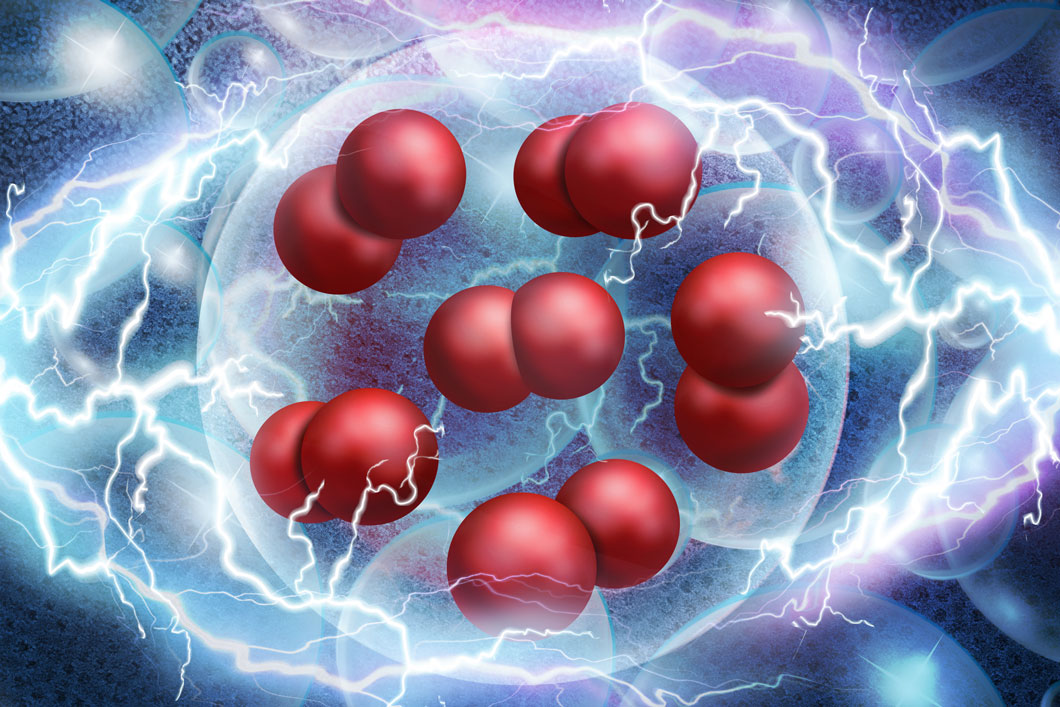
Nano-materials (in the background) are used in the catalysis of H2
Source: BAM
In a large European cooperation project, BAM has optimised nano-materials that can be used in the production of green hydrogen. The research results of BAM and the participating project partners will make it possible in future to produce the materials for electrocatalysts, which are still very expensive today, in a more cost-effectively and sustainable way.
Nano-materials are used in the production, storage and transport of sustainable energy, e.g., in solar cells, in high-power electrical engineering, in batteries and in the production of hydrogen by electrolysis. In this process, surfaces are coated with nanostructured materials in extremely thin layers of less than 100 nanometres, i.e., less than a ten thousandth of a millimetre. Due to their structure and because they partly consist of several components, it has so far been very difficult to detect these high-performance materials with measuring methods, to evaluate them chemically and physically and to optimise their performance on this basis.
This aspect was the focus of the project "Hybrid metrology for thin films in energy applications" (HyMet), in which, in addition to BAM, 17 other research institutes, universities and companies from seven countries were involved. The aim of the project was to develop new measurement technologies for nanostructured materials.
The consortium was funded for three years by the renowned EMPIR programme of the European Union and by the European Association of National Metrology Institutes (EURAMET).
BAM, in close cooperation with the Technical University of Berlin and the Physikalisch-Technische Bundesanstalt, focused on investigations on electrocatalysts which can be used to produce green hydrogen from electricity. Typically, catalysts based on the metal iridium are used - a very rare and expensive element.
Modern electron microscopy and spectroscopy methods have made it possible to optimise the material so that it can be used more efficiently in future. "With our findings, it will be possible in future to develop cheaper, more durable and at the same time more efficient electrocatalysts", said Andreas Hertwig, who was responsible for BAM's project participation.
"With the results from HyMet", said BAM President Prof. Dr. Ulrich Panne, "BAM is making another important contribution to the success of the energy turnaround and to the path towards a hydrogen economy which is safe and in which people can have confidence".
BAM has been conducting research on modern hydrogen technologies for a long time. In September 2020 it has bundled its expertise in this field into a competence center H2Safety@BAM in order to optimally support the hydrogen strategies of the Federal Government and the EU.


